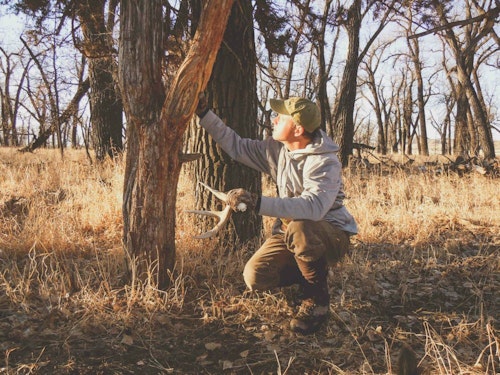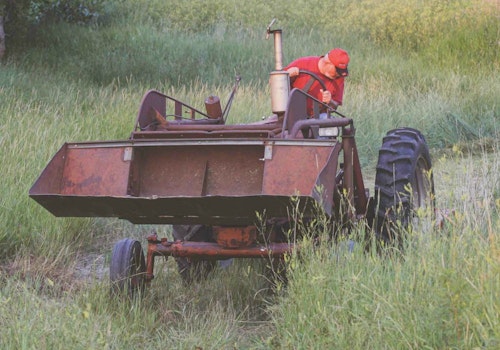By nature, whitetail hunters are timid. I’m not suggesting you won’t stand up for what’s right when the time comes, but when it comes to whitetails, you need to treat them like the Boss when you’re pining for a commendation. That said, spring is a time when you can be bold.
Why be bold in the spring? This time of year, you can get a lot done in the whitetail woods with the least amount of damage to a whitetail’s psychological paranoia. Consider the following for spring whitetail chores: New stand placements, stand maintenance, hidden food plots, water improvements, trail manipulation, camera placements and new mineral sites. Now, get your to-do list drafted and forget about being an apparition, just get to work.
Weather
Assuming winter hasn’t skipped ahead due to climate change, whitetails will have had several weeks or months to rebound from winter stress. The spring bloom brings on some of the most succulent and nutritious feed of the year. Whitetails may have to feed longer to fill up on the smaller portions, but a winter wheat field or budding shrubbery starts whitetails down the road to binge eating that continues to fall. Your green up depends on the latitude you live, but by April most whitetails have beaten back the Grim Reaper and are budding antlers or bulging from fawn development.
Antlers
I know you’re a shed antler addict, and all those hours sneaking around your whitetail hunting property revealed heaps of insight and information. Put those finds to use as you hash out new hideouts for ambushes. Before the explosion of foliage, you can see everything like a neighbor who doesn’t pull the shades. Fortuitously, I’m sure you noted scrapes from the previous rut and rub lines shining like night-eyes along a trail. Using a hunting app like HuntStand, you can check for prevailing winds and use the data collected from previous months to strategically place stands and ground blinds.
Think boldly as you nudge up against refuge areas and locations you might likely sidestep later in the summer for fear of blowing out resident deer. You may not hunt these interior locations in the early archery-only season, but they offer great potential for all-day sits during the rut.

Forage
This is also the time to consider preparing new ground for food plots and even adding in mini plots along interior corridors to target nocturnal bucks. A small plot in an opening surrounded by timber can sometimes pull a buck out of hiding before he would ever contemplate stepping out on a major food plot until darkness arrives.
If you still have an apprehension about disturbing deer in their homelands, you can blend your boldness with the daily grind of whitetail country. The best cover to coordinate with is the rumble of tractors as they plod along doing field work. A farmer prepping a field for planting or sowing seeds offers you the chance to disappear within the agribusiness ruckus. Crews fixing fence, livestock rotations and other busy chores give you the opportunity to disappear within the rural hubbub.

Keep Cool
There’s one more huge benefit and you can thank Mother Nature for it. First, spring weather typically doesn’t include temperatures or humidity that hovers near the century mark. In layman’s terms, you won’t get heatstroke. Second, the hordes of insect hatches are still weeks away, and although you may have to spray down for an early tick outbreak, most mosquitoes, gnats and other buzzing bugs will be in subdued numbers. Some locales may warm enough for a venomous snake to slither about, but they’ll be listless at best, especially in the cool, morning periods. Finally, the spring green up will be underway, but those of you prone to itch won’t have to burden yourself with nonstop scanning for poison ivy, sumac or oak, or add in your own vegetation allergen here. You may stumble across early blooms of these nasty plants, but summer is when most of these irritants flourish in full glory.
The best benefit of all for bold, springtime chores is time. By busting out a pile of whitetail work now, you’re giving deer four to five months to forget about you. And be honest with yourself; whitetails encounter danger or perceived danger nearly every day of their life. A rambunctious squirrel could startle a napping deer into thinking the first horseman of the Apocalypse just rode into town. Coyotes, bears, rural linesmen and mushroom hunters all have the potential to scare the “bejeebers” out of a whitetail, but deer have forever to forget about your bold intrusion. Utilize a bit of concern with a quiet entrance and scent-eliminating products, but get the work done and get out.
Time
Finally, you also must consider your time. If you have discovered a way to cache extra time during this period, please private message me. During summer, I’m busier than a beaver repairing dams from a fuming farmer fatigued from repeated flooding of fields. That’s busy. By using spring as your major season to get ready for whitetail hunting, you don’t have to rush at the last minute as fall looks you in the face. Now go forth and be bold this spring.






